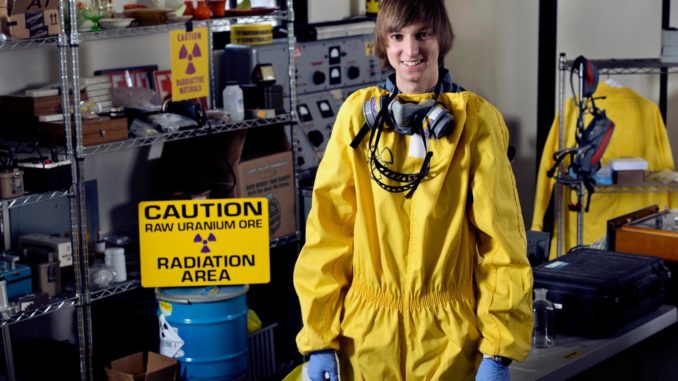
A teenager from Southern California has designed a compact nuclear reactor capable of converting waste from old atomic weapons into power for homes and factories.
Eighteen-year-old Taylor Wilson says his invention could maybe one day power space colonies.

BYPASS THE CENSORS
Sign up to get unfiltered news delivered straight to your inbox.
You can unsubscribe any time. By subscribing you agree to our Terms of Use
Latest Video
Digitaljournal.com reports: According to TED Blog, Wilson, who graduated from high school in May, first came to attention at the tender age of 14 after he designed a nuclear fission reactor he planned to build in his parents’ garage.
He spoke about that at TED2012 and at TED2013 Conference in Southern California, he spoke about his latest project on Thursday.
AFP reports he said: “It’s about bringing something old, fission, into the 21st Century. I think this has huge potential to change the world.”
According to TED Blog, he said: “I realized that the biggest problem we face — what all these other problems come down to — is energy. This is a talk about fission — about taking something old and bringing it into the 21st century… I think this has a huge potential to change the world.”
TED Blog reports that what Wilson has invented is a Small Modular Fission Reactor that can be built in factories and shipped to anywhere they are needed. The reactors are installed three meters underground which makes safer from the perspective of counter-terrorism than reactors built above the ground. They are also molten salt reactors, meaning, according to TED Blog, that they can run on the waste from old nuclear weapons and thus make it possible to find a way to use the material from weapon stockpiles, another safety issue from the counter-terrorism perspective.
According to AFP, the reactor is capable of generating 50-100 megawatts of electricity, enough to power as many as 100,000 homes.
Wilson explains that one of the problems with traditional nuclear power plants is that they need refueling after running for 18 months. But the young inventor’s Small Modular Fission Reactors can run for up to 30 years without need for refueling. The advantage from this is that they can be run as a closed system while they are in use, this being yet another safety feature. According to Wilson, after 30 years the reactors can be sealed up and discarded.
TED Blog reports that Wilson, commenting on the safety features of his reactors, said: “Everybody after Fukushima had to reassess the safety of nuclear. When I set out to design a reactor, I knew it had to be passive and intrinsically safe.”
Wilson explains that because the material in his Small Modular Fission Reactors is molten they cannot experience meltdowns. However, in the case of an accident, all that need be done is to drain the core into a tank underneath the reactor and the reaction stops. He said: “In the event of an accident, you can just drain the core into a tank under the reactor with neutron absorbers and the reaction stops. There is no inclination for the fission products to leave this reactor. In an accident, the reactor may be toast, which is sorry for the power company, but there is no problem.”
He said while speaking at TED: “You can plop them down anywhere in the world and they work, buried under the ground for security reasons. In the Cold War we built up this huge arsenal of nuclear weapons and we don’t need them anymore. It would be great if we could eat them up, and this reactor loves this stuff.”
According to AFP, Wilson’s reactors are designed to spin turbines using gas instead of steam. This means they can operate at temperatures lower than traditional nuclear reactors.
AFP reports that Wilson said he is putting off university to focus attention on starting a company to make Modular Fission Reactors. According to AFP, “He sees his competition as nations, particularly China, and the roadblocks ahead as political instead of technical.”
Wilson plans to have a prototype of his reactors ready in two years. He told TED curator Chris Anderson that he hopes to have a marketable product in five years.
Wilson said the prospects for his Small Modular Fission Reactors are exciting because they are environment-friendly and could help to combat climate change by providing carbon-free electricity for homes and businesses. He said the reactors also have great potentials to provide power for the developing world.
He said enthusiastically: “Not only does it combat climate change, it can bring power to the developing world.”
He enthused further: “Imagine having a compact reactor in a rocket that produces 50-100 megawatts. That’s the rocket designer’s dream. I think there’s something poetic about using nuclear power to propel us to the stars. Because the stars are giant nuclear power reactors themselves… Imagine having a compact reactor in a rocket designed by those planning to habitat other planets. Not only would you have power for propulsion, but power once you get there.”


